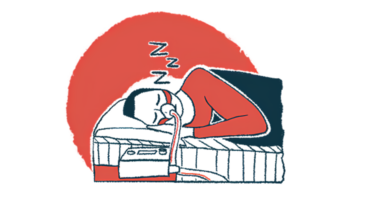PWS Patients Show Abnormal Craniofacial Patterns That Change With Age

Children, adolescents, and adults with Prader-Willi syndrome (PWS) have distinct craniofacial patterns relative to healthy individuals, according to a study in Norway.
These patterns also changed with age, with children showing a more receding chin, and adults exhibiting a prognathic, or forward-projecting lower jaw, along with abnormal tooth angles.
Findings from the study may help to better understand the craniofacial growth pattern of these patients over time, which may be relevant for dental treatment, the researchers noted.
The study, “Craniofacial and dentoalveolar morphology in individuals with Prader–Willi syndrome: a case-control study,” was published in the Orphanet Journal of Rare Diseases.
PWS is a complex genetic disease characterized by several symptoms, ranging from weak muscle tone to growth hormone deficiency, and from insatiable hunger to cognitive and behavioral problems.
People with PWS also show distinct facial features, such as almond-shaped eyes, a thin upper lip, a downturned, triangular-shaped mouth, and a disproportionately long and narrow head.
Oral abnormalities have also been reported in these patients along with daytime tooth grinding, low salivary flow, and subsequent severe tooth wear.
However, “little is known about the craniofacial growth direction or dental and skeletal relationships in individuals with PWS in different ages,” the researchers wrote.
To address this, a team of researchers in Norway compared the lateral cephalograms of 42 PWS patients with those of 189 healthy individuals by age and sex. The healthy control group represented a random selection of skeletal types and tooth misalignment at the various age levels in the general population.
A lateral cephalogram is a profile X-ray of the skull that allows assessment of craniofacial features such as dimensions, growth directions, relations of the teeth to the jaw and of the jaw to the skull, and tooth alignment and angles.
This study was part of a larger, multidisciplinary investigation of the oral aspects of PWS on the same patients.
Included patients comprised 12 children (five boys and seven girls) with a mean age of 8.8 years, 10 adolescents or young adults (six boys and four girls) with a mean age of 15.9 years, and 20 adults (11 men and nine women) with a mean age of 26.9 years.
Results showed that children, adolescents, and adults with PWS had significant deviations and distinct craniofacial patterns from the control group.
Specifically, children with the disease exhibited a recessed chin, with the lower jaw being positioned further back than the upper jaw and a longer face, compared with healthy children.
Adolescents and young adults with PWS continued to show a recessed chin and had a longer lower face (the region between the base of the nose and the chin) than the control group. The lower jaw was not as recessed in adolescents as in children with the disease.
Opposite features were observed in adult patients, who showed a prognathic lower jaw with a protruding chin, and an anterior, or more outward, growth direction, than healthy adults and younger PWS patients.
Adults with PWS also showed abnormal teeth angles, with their lower incisors being tilted toward the roof of the mouth, and their upper incisors being tilted toward the lips, compared with the controls.
Upper incisors in adolescent and adult patients were more tilted toward the lips than those in children with PWS. These dental abnormalities were likely the result of a compensatory mechanism to the prognathic lower jaw and a more anterior growth direction, the team noted.
Given that 88.1% of patients were on standard growth hormone treatment — which has been suggested to promote facial and low jaw growth toward a more prognathic pattern — “it is important to be aware of the possible effect” of long-term growth hormone treatment on craniofacial growth in PWS patients, the researchers wrote.
These findings “may contribute to a better understanding of the craniofacial pattern for children, young adults and adults with PWS and may have a clinical importance when planning dental treatment, such as [dental prostheses] and/or [dental braces],” they added.
The team also emphasized the importance of monitoring tooth wear and identifying its causes early on to prevent abnormal loss of tooth substance and possible changes in facial structure in the patient population.







